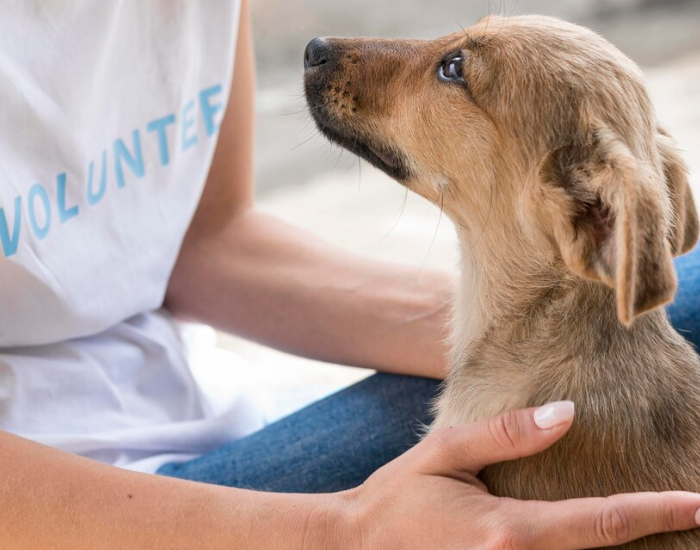A therapy dog is a trained and certified dog that provides emotional support to people in hospitals, nursing homes, schools, and other institutions. Therapy dogs can help alleviate stress and anxiety, provide comfort and companionship, and improve mental health and well-being. If you are interested in getting a therapy dog in the UK, there are several steps you need to follow. In this article, we will discuss how to get a therapy dog in the UK.
Step 1: Determine if a therapy dog is right for you
Before you start the process of getting a therapy dog, it is essential to determine if a therapy dog is right for you. A therapy dog can be beneficial for people with various conditions, including anxiety, depression, PTSD, autism, and other mental health conditions. However, it is important to understand that a therapy dog is not a substitute for professional treatment or medication.
Therapy dogs can provide many benefits to their owners, such as emotional support, stress relief, and companionship. However, owning a therapy dog requires a significant amount of time, energy, and resources. Before you begin the process of getting a therapy dog, it is important to consider the following factors:
Your lifestyle: Therapy dogs require a significant amount of time, energy, and attention. If you have a busy lifestyle or are frequently away from home, a therapy dog may not be the best fit for you.
Your living situation: Some living situations, such as apartments or rental properties, may have restrictions on pets. It is important to check with your landlord or housing association to ensure that you are able to have a therapy dog.
Your health: If you have allergies or other health conditions that could be exacerbated by owning a dog, a therapy dog may not be the best option for you.
Your financial resources: Therapy dogs require a significant financial investment, including the cost of the dog, training, food, and veterinary care. It is important to ensure that you have the financial resources to provide for a therapy dog.
Step 2: Choose the right breed
Choosing the right breed for a therapy dog is an important decision as it can affect the success of the dog in providing therapy. Different breeds have different traits and temperaments, and some breeds are better suited for therapy work than others. Here are some factors to consider when choosing the right breed for a therapy dog:
Temperament: A therapy dog should have a calm and friendly temperament, be tolerant of different types of people and environments, and be comfortable being handled and petted.
Size: The size of the dog should be appropriate for the type of therapy work it will be doing. Smaller dogs may be better suited for visiting hospitals and nursing homes, while larger dogs may be better suited for providing assistance to individuals with mobility issues.
Energy level: A therapy dog should have a moderate energy level that can be channeled into positive interactions with people. High-energy breeds may become overstimulated and anxious in certain environments, while low-energy breeds may not have the necessary enthusiasm for therapy work.
Trainability: A therapy dog should be easy to train and able to learn and execute commands reliably. Breeds that are highly trainable, such as retrievers and poodles, may be well-suited for therapy work.
Grooming requirements: Consider the grooming requirements of the breed. Therapy dogs should be clean and well-groomed to ensure they make a good impression on those they are visiting.
Health: Choose a breed that is generally healthy and free of genetic disorders that may affect their ability to provide therapy work.
Affectionate: A therapy dog should be affectionate and enjoy interacting with people. This is especially important for dogs that will be working with individuals with mental health issues.
Social: A therapy dog should be social and enjoy interacting with other dogs and animals. This is especially important for dogs that will be working in group therapy settings.
Independent: A therapy dog should be independent and able to work calmly without constant attention from their handler.
Adaptability: A therapy dog should be adaptable to different environments and situations. Breeds that are adaptable, such as Labrador Retrievers and Golden Retrievers, may be well-suited for therapy work.
Choosing the right breed for a therapy dog is an important decision that can greatly impact their ability to provide effective therapy. Consider the breed's temperament, size, energy level, trainability, grooming requirements, health, affectionate, social, independent, and adaptability when making your decision. It is also important to remember that each dog is an individual and may not fit perfectly into breed generalizations.
Step 3: Find a reputable breeder or adoption agency
Once you have chosen the right breed, the next step is to find a reputable breeder or adoption agency. It is important to select a breeder or adoption agency that follows ethical breeding practices and ensures the health and well-being of the dogs. If you choose to adopt a therapy dog, there are several adoption agencies in the UK that specialize in placing therapy dogs in homes. Some of these agencies include Canine Partners, Pets as Therapy, and Dogs for Good.
Step 4: Train the dog
Training a therapy dog is crucial for them to perform their duties well. The training process for therapy dogs varies based on the breed, age, and temperament of the dog. The following are some essential aspects to consider when training a therapy dog:
Basic Obedience: Before starting any specialized training, it's essential to train your therapy dog in basic obedience, such as sit, stay, come, and heel. This basic obedience will form the foundation for any other training you want to undertake.
Socialization: Socialization is an essential aspect of therapy dog training. Your dog should be able to interact with different people, animals, and environments without getting anxious or aggressive. You can introduce your dog to different situations, people, and environments gradually, starting with calm and friendly ones.
Task-specific training: The next step in therapy dog training is to teach them the specific tasks they'll perform as therapy dogs. These tasks will vary depending on the setting and the needs of the individuals or groups they'll be working with. For example, therapy dogs in hospitals may need to learn how to behave calmly around medical equipment and be gentle around patients, while those in schools may need to learn how to interact with children.
Desensitization: Therapy dogs should be comfortable with different sights, smells, and sounds. They should not be afraid of unusual sounds or objects, as this could trigger anxiety in the people they are assisting. Desensitization training helps your therapy dog become comfortable in different environments.
Step 5: Get therapy dog certified
Certification is essential for therapy dogs. Certification ensures that the dog has the necessary skills and temperament to work as a therapy dog. To get certified, the dog must pass a series of tests, including obedience, temperament, and behaviour tests. well-trained, well-behaved, and able to perform its duties as a therapy dog. It's important to note that certification is not mandatory for therapy dogs in the UK. However, certification provides reassurance to establishments and clients that the dog has been properly trained and assessed for its role as a therapy dog.
Step 6: Volunteer with a therapy dog organization
After the dog is certified, the next step is to volunteer with a therapy dog organization. Therapy dog organizations work with hospitals, nursing homes, schools, and other institutions to provide therapy dog services to people in need. Volunteering with a therapy dog organization can be a rewarding experience, as it allows you and your dog to make a positive impact on people's lives.
Conclusion
Getting a therapy dog in the UK can be a lengthy and challenging process, but the rewards are well worth it. A therapy dog can provide emotional support and companionship to people in need, and volunteering with a therapy dog organization can be a fulfilling experience. If you are interested in getting a therapy dog, make sure to follow the necessary steps and work with reputable breeders, trainers, and certification organizations to ensure that your dog is adequately trained and qualified for therapy work. With a little bit of effort, you and your furry friend can make a meaningful difference in people’s lives.












